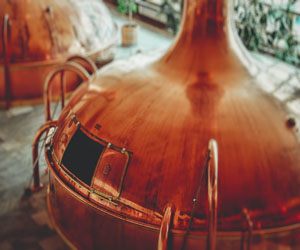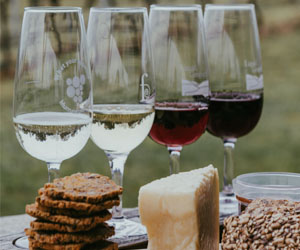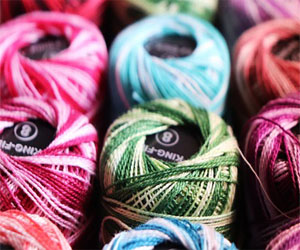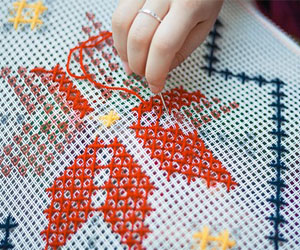



Brewing, the process of turning raw ingredients into a delightful beverage, is an art and science that has evolved over thousands of years. Brewing techniques encompass a wide range of skills, from selecting and preparing ingredients to managing fermentation and conditioning. Understanding the nuances of brewing techniques is essential for producing exceptional beer, and it is a craft that continues to captivate brewers and beer enthusiasts worldwide.
The Brewing Ingredients: Brewing begins with the careful selection of ingredients, each playing a vital role in shaping the flavor and character of the final product. Water, malt, hops, and yeast are the foundation of beer. The quality of the water source can impact everything from the taste to the clarity of the beer. Malt, often derived from barley, provides the fermentable sugars that yeast will consume during fermentation. Hops add bitterness, aroma, and flavor. Yeast is the microorganism responsible for fermenting the wort into beer.
The Mashing Process: Mashing is the first key step in brewing. It involves soaking the crushed malt in hot water to extract sugars and create a sugary liquid known as wort. The temperature and duration of mashing impact the flavor, body, and sweetness of the beer. Different mashing techniques, such as single infusion or step mashing, allow brewers to tailor the wort to their desired specifications.
Boiling And Hop Addition: The next step is boiling the wort and adding hops. Boiling sterilizes the wort and extracts essential oils and bitterness from the hops. The timing and types of hops used in this phase greatly influence the beer's aroma and bitterness. Brewers carefully calculate when to add hops to achieve the desired flavor profile.
Fermentation: Fermentation is where the magic happens. Yeast is introduced to the wort, and it consumes the sugars, producing alcohol and carbon dioxide. Fermentation temperatures, yeast strains, and fermentation time are all critical factors that influence the beer's taste and aroma. For example, ale yeast works at warmer temperatures, producing fruity esters, while lager yeast operates at cooler temperatures, yielding a clean and crisp taste.
Conditioning: After fermentation, beer typically undergoes a conditioning phase. This can occur in the fermenter or in bottles or kegs. Conditioning allows the flavors to mature, any off-flavors to mellow, and for carbonation to develop. The length of conditioning can vary greatly depending on the beer style, with some beers requiring weeks or even years of aging.
Packaging: Once conditioning is complete, the beer is ready for packaging. Brewers have various choices, including bottles, cans, or kegs, each of which has an impact on the beer's final presentation. Proper packaging and sealing are crucial to maintain the beer's quality and shelf life.
Brewing techniques are continuously evolving as brewers experiment with new ingredients, processes, and styles. Whether it's the resurgence of ancient brewing methods, like sour beer production, or innovative approaches like barrel aging and fruit infusions, the world of brewing is filled with creativity and experimentation.
Brewing techniques are a dynamic fusion of art and science. The mastery of ingredient selection, mashing, boiling, fermentation, and conditioning is what distinguishes a great brewer. Brewing allows individuals to craft a wide range of beer styles, each with its unique flavor profile and characteristics. It's a centuries-old tradition that continues to be both an artisanal endeavor and a scientific exploration, offering a diverse and exciting world of flavors and experiences for beer enthusiasts to savor.




 Taste And Smell: The sense of taste and smell are closely intertwined, working together to create the flavors we savor in our favorite foods and beverages. These senses have the power to evoke powerful memories and emotions. The aroma of a homemade apple pie might transport you back to your grandmother's kitchen, while the taste of a particular wine could remind you of a special celebration.
Taste And Smell: The sense of taste and smell are closely intertwined, working together to create the flavors we savor in our favorite foods and beverages. These senses have the power to evoke powerful memories and emotions. The aroma of a homemade apple pie might transport you back to your grandmother's kitchen, while the taste of a particular wine could remind you of a special celebration.
Touch: Our sense of touch allows us to experience a wide range of sensations, from the warmth of sunlight on our skin to the comforting embrace of a loved one's hug. This sense plays a fundamental role in our connections with the world and the people in it.
Crafting The Foundations Of A Creative Journey
 Safety First: Safety is paramount in woodworking. As a beginner, familiarize yourself with the proper use of safety gear, such as safety glasses, ear protection, and dust masks. You should also learn how to use tools safely, including saws, chisels, and drills, to avoid accidents and injuries.
Safety First: Safety is paramount in woodworking. As a beginner, familiarize yourself with the proper use of safety gear, such as safety glasses, ear protection, and dust masks. You should also learn how to use tools safely, including saws, chisels, and drills, to avoid accidents and injuries.
Tools Of The Trade: Every woodworker, regardless of their skill level, relies on a set of essential tools. As a beginner, you'll want to start with the basics, which may include a saw, chisels, a mallet, a tape measure, a square, and clamps. Over time, you can gradually expand your tool collection as your skills progress.
Selecting Your Wood: Choosing the right type of wood is a critical step in any woodworking project. Beginners often opt for softwoods like pine or cedar because they are easier to work with and more forgiving to mistakes. As you gain experience, you can explore the use of hardwoods like oak, maple, and cherry.
Learning The Art Of Joinery: Joinery is the technique of connecting two pieces of wood to form a strong, lasting bond. As a beginner, start with basic joinery methods such as butt joints, lap joints, and dowels. As you become more skilled, you can delve into more complex joinery, such as mortise and tenon or dovetail joints.
Practicing Patience: Woodworking requires patience. It's essential to approach each project with a willingness to learn from your mistakes and take your time to ensure precision. The journey is as important as the final product, and each project you complete will build your skills and confidence.
 Handbuilding: Handbuilding is one of the most fundamental and versatile techniques in pottery. It involves using the hands to shape the clay. This can be done through techniques such as pinching, coiling, and slab-building. Pinching entails squeezing and forming the clay, coiling is the process of building up the form with clay ropes, and slab-building involves using flattened sheets of clay to construct objects. Handbuilding allows for a great deal of artistic expression and often results in unique, irregular forms.
Handbuilding: Handbuilding is one of the most fundamental and versatile techniques in pottery. It involves using the hands to shape the clay. This can be done through techniques such as pinching, coiling, and slab-building. Pinching entails squeezing and forming the clay, coiling is the process of building up the form with clay ropes, and slab-building involves using flattened sheets of clay to construct objects. Handbuilding allows for a great deal of artistic expression and often results in unique, irregular forms.
Wheel-Throwing: Wheel-throwing, or throwing, is a technique where the potter shapes clay on a rotating wheel. The wheel's motion allows for even and symmetrical forms, making it ideal for creating functional items like bowls, cups, and vases. Potters use their hands and various tools to manipulate the clay as it spins, drawing upon their skill and precision to achieve the desired shape and texture.
Coiling: Coiling is a method where clay ropes or coils are stacked and joined together to create a three-dimensional form. It is one of the oldest pottery techniques, with historical examples dating back thousands of years. Coiling provides both strength and flexibility, making it suitable for constructing larger vessels and sculptural pieces.
Slab-Building: Slab-building entails rolling out flat sheets of clay and cutting them into shapes that are assembled to create an object. It allows for the creation of more geometric and angular forms. Artists can also add texture and design elements to the slabs before assembly, resulting in visually striking pottery.
Crafting Beauty With Thread
 Exploring The Rich World Of Decorative Stitching: Decorative stitching encompasses a wide array of techniques, each offering a unique way to embellish and beautify fabrics. While the art of sewing often serves a functional purpose, decorative stitching goes beyond utility to infuse items with a touch of artistic flair.
Exploring The Rich World Of Decorative Stitching: Decorative stitching encompasses a wide array of techniques, each offering a unique way to embellish and beautify fabrics. While the art of sewing often serves a functional purpose, decorative stitching goes beyond utility to infuse items with a touch of artistic flair.
Embroidery: The Timeless Embellishment
Embroidery is one of the most celebrated forms of decorative stitching. This intricate craft involves the use of various stitches, threads, and colors to create patterns, designs, and images on fabric. Whether it's delicate floral motifs, intricate lacework, or intricate monograms, embroidery adds a personal and artistic touch to everything from clothing to home furnishings.
Quilting: Stitching Stories In Fabric
Quilting is another form of decorative stitching that marries functionality with artistic expression. Quilters use stitches to join layers of fabric and create intricate designs that often narrate stories or reflect cultural traditions. From patchwork quilts to intricately stitched bedspreads, quilting is a testament to both creativity and craftsmanship.
Appliqué: Layering For Impact
Appliqué is a technique that involves sewing one piece of fabric onto another, often in a layered or patchwork manner. It allows for the addition of different textures, colors, and patterns to create striking and vibrant designs. Appliqué is commonly used in clothing, accessories, and textile art.
Nurturing Your Skin And The Planet
 Biodegradable Packaging: Green skincare products are packaged in eco-friendly containers that are either biodegradable or recyclable. These efforts aim to reduce the vast amounts of plastic waste that end up in our oceans and landfills.
Biodegradable Packaging: Green skincare products are packaged in eco-friendly containers that are either biodegradable or recyclable. These efforts aim to reduce the vast amounts of plastic waste that end up in our oceans and landfills.
Transparency: Green skincare brands tend to be more transparent about their ingredients, sourcing, and production methods. This transparency empowers consumers to make informed choices about the products they use.
Toxin-Free Formulas: Many mainstream skincare products contain potentially harmful chemicals, such as parabens, phthalates, and sulfates. Green skincare, on the other hand, avoids these toxins and focuses on safer, more natural alternatives.
Holistic Approach: Green skincare often takes a holistic approach to beauty. It emphasizes that what goes on your skin can affect your overall well-being. It encourages mindfulness about the products you choose and their potential long-term effects.
Gentle On Sensitive Skin: Green skincare is typically gentle on sensitive skin. Natural ingredients and fewer harsh chemicals reduce the likelihood of skin irritations, allergies, and breakouts.
Efficacy And Results: Many people believe that natural products are less effective than their chemical-laden counterparts. However, green skincare proves otherwise, with numerous natural ingredients known for their therapeutic and rejuvenating effects.
Crafting Your Way To Creativity And Fulfillment
 Skill Development: Handmade projects offer the opportunity to learn and develop new skills. Whether you're perfecting your knitting techniques, honing your woodworking abilities, or expanding your artistic talents, each project is a chance for growth and self-improvement.
Skill Development: Handmade projects offer the opportunity to learn and develop new skills. Whether you're perfecting your knitting techniques, honing your woodworking abilities, or expanding your artistic talents, each project is a chance for growth and self-improvement.
Sustainability: In an age of mass production and consumerism, handmade projects can be a sustainable choice. Crafting your own items reduces the need for disposable products and promotes a culture of reuse and sustainability.
Connection: Handmade projects often bring people together. Joining crafting communities, attending workshops, or collaborating on projects with friends or family can foster a sense of connection and shared creativity.
To get started with your own handmade projects, consider the following:
Choose Your Craft: Select a craft that interests you the most. Whether it's sewing, pottery, knitting, or any other craft, your passion will drive your creativity.
Gather Materials: Acquire the necessary materials and tools. Invest in quality materials to ensure a successful and rewarding crafting experience.
Start Simple: Begin with straightforward projects to build your confidence and skills. As you gain experience, you can take on more complex and intricate creations.
Learn From Others: Join crafting groups, attend classes, or watch online tutorials. Learning from experienced crafters can provide valuable insights and techniques.
A Creative Path To Wellness
 Mindfulness: Crafting encourages mindfulness, which is the practice of being fully present in the moment. When you're immersed in a creative project, your focus shifts to the task at hand. This state of mindfulness can reduce symptoms of anxiety and depression and improve overall well-being.
Mindfulness: Crafting encourages mindfulness, which is the practice of being fully present in the moment. When you're immersed in a creative project, your focus shifts to the task at hand. This state of mindfulness can reduce symptoms of anxiety and depression and improve overall well-being.
Self-Esteem: Completing a craft project can provide a significant boost to self-esteem and self-worth. Seeing your creations come to life fosters a sense of accomplishment, pride, and a positive outlook on your abilities.
Distraction From Negative Thoughts: Crafting serves as a productive and enjoyable distraction from negative or intrusive thoughts. By focusing on the project, you can redirect your mental energy away from worries and concerns.
Social Connection: Crafting can be a social activity, allowing you to connect with others who share your interests. Joining crafting communities, attending workshops, or crafting with friends can provide a sense of belonging and reduce feelings of isolation.
Emotional Expression: Craft projects offer a creative outlet for emotional expression. Whether it's through painting, writing, or other crafts, you can channel your emotions and experiences into your creations, helping you process and cope with challenging feelings.
Exploring Beer Ingredients
 Water may seem unassuming, but it is arguably the most critical ingredient in brewing. Its composition, mineral content, and purity greatly affect the final beer. Different regions with unique water sources contribute to distinct beer styles. For instance, the soft water of Pilsen, Czech Republic, played a pivotal role in the creation of the world-famous Pilsner lager.
Water may seem unassuming, but it is arguably the most critical ingredient in brewing. Its composition, mineral content, and purity greatly affect the final beer. Different regions with unique water sources contribute to distinct beer styles. For instance, the soft water of Pilsen, Czech Republic, played a pivotal role in the creation of the world-famous Pilsner lager.
Malt: The Heart Of The Brew
Malt, typically derived from barley but sometimes wheat, rye, or other grains, serves as the primary source of fermentable sugars in beer. It undergoes a malting process, which involves soaking, germinating, and drying the grain to convert the starches into fermentable sugars. The variety of malt used, the degree of roasting, and the kilning process determine the color, flavor, and body of the beer. Lightly roasted malts contribute to pale lagers, while deeply roasted malts produce rich, dark stouts and porters.
Hops: The Spice Of Beer
Hops are the flowers of the hop plant and provide the bitterness, aroma, and flavor to beer. The bitterness in beer balances the sweetness of the malt, while the aromatic and flavorful qualities create the beer's distinctive taste. The choice of hop variety and the timing of hop additions during brewing greatly influence the final product. Some beer styles, like the hoppy and aromatic India Pale Ale (IPA), showcase the extensive use of hops, while others, like Belgian ales, use hops more conservatively, emphasizing yeast character.
Yeast: The Magical Microorganism
Yeast, the smallest but most vital ingredient, is responsible for fermentation, the process that transforms the sugars in the malt into alcohol and carbon dioxide. Yeast strains vary in their fermentation characteristics, producing different flavors, aromas, and esters in beer. The yeast strain used is a defining factor in the creation of specific beer styles. Ale yeast, with its higher fermentation temperatures, imparts fruity and estery notes, while lager yeast, fermented at cooler temperatures, yields cleaner and crisper flavors.